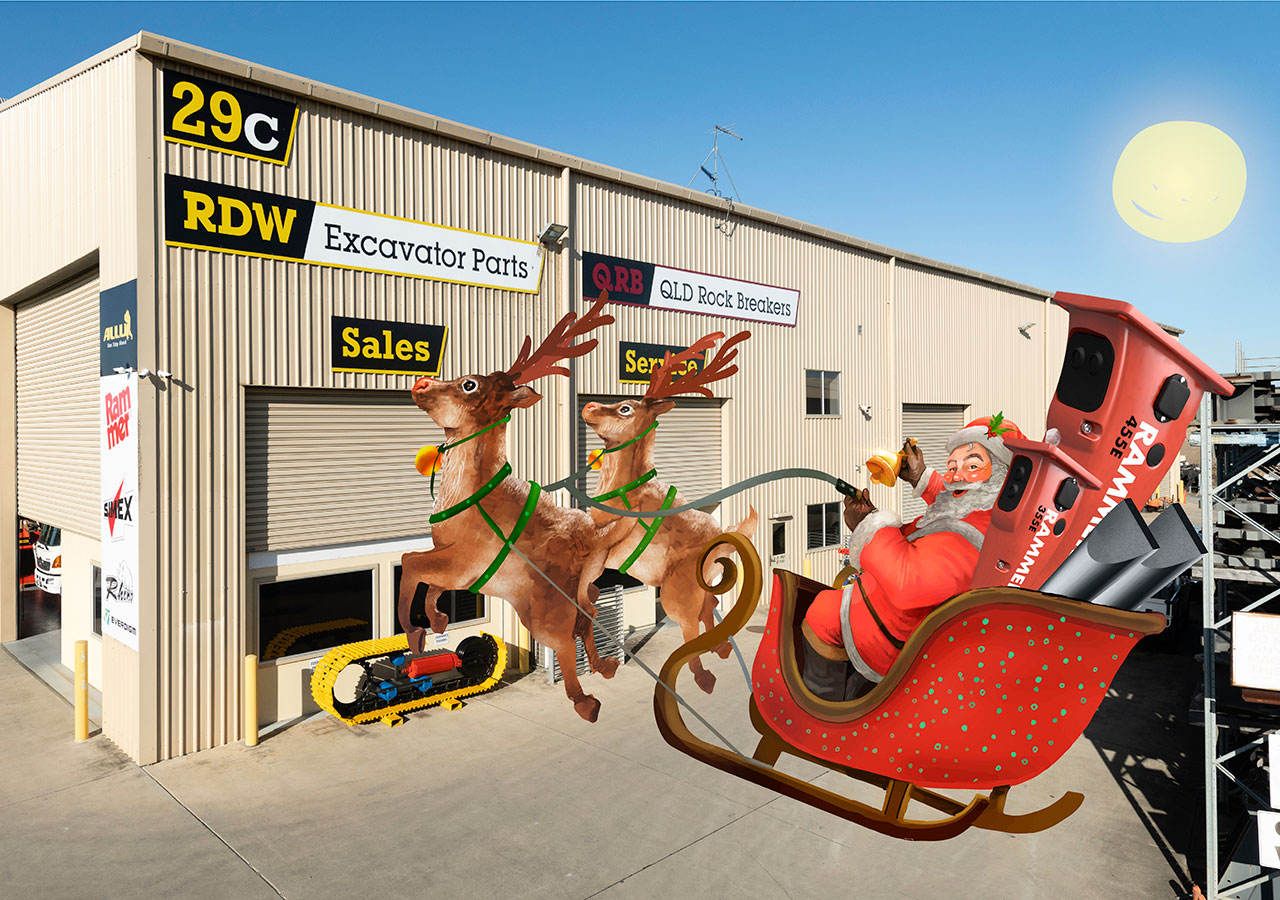So what is happening in relation to Quick Hitches in Australia?
The immediate answer is NOTHING. Currently, all quick hitches that have a device (can be a manual locking pin) that prevent the bucket from falling off the hitch are allowed to be used in Australia.
However, this is likely to change in the future. Over the last year, there were two deaths in NSW related to buckets falling off excavators and crushing a person in the vicinity of the machine. The Coroners investigations are still ongoing, however in both cases, the manual locking pin had not been inserted. Workcover NSW commenced down the path of legislating to ban semi-automatic manual-pin quick hitches and drafted a paper to change over to fully automatic quick hitches (with indication). The draft paper was quickly withdrawn because of feedback critiquing the retrospective nature and costs involved in replacing previously compliant hitches, and at present, there is no new legislation banning any type of quick hitch currently being sold.
However, virtually the same draft document is likely to be released probably early in 2013. Qld and other states will likely follow NSW’s lead. The key points that determine the suitability of a quick hitch are likely to be if the following two questions are answered with a Yes:
- 1.Is the hitch locked into position automatically, with indication visible (or using a sensing system) from the operators position?
- 2.In the event of a hydraulic failure, will the hitch remain attached to both pins (“dual lock”) in the operating position?
The regulation is likely to apply only to new machines sold after a particular date, and is likely to give owners of existing hitches 7 years (approximately the life of most hitches) to replace to the new technology.
However, as is always the case, there are some companies that interpret the legislation differently and start requiring machines to this standard sooner. As Key Selection criteria to determine which products meet the above requirements, consideration should be given to the following aspects:
a) What happens in the event of a Hydraulic Failure? This can be checked by simulating a hydraulic failure. The bucket should remain in a position where you can continue to dig, but should provide a means of “telling” the operator the hydraulics have failed.
b) Do the tongues fully enclose both front and rear pins in the locked position? If not, the bucket could become disengaged or swing.
c) You should not be able to pick up the bucket unless the locking system is fully engaged. Systems that rely on hydraulically inserting a pin can be “nearly” in position, then fall off if the hydraulic system fails.
d) The safety system should not be the same as the primary retention system. That is, if the system relies on Hydraulics to activate, a secondary system should be a mechanical lock or similar. Examples are springs or latches that lock the system in place until hydraulic pressure is restored.
e) The safety system should be protected from the external operating environment, for instance from external hits and dirt collection that may impede it’s function.
f) Springs and “stored energy” – All hydraulic systems and springs can contain “stored energy”, for example the track adjusters on your undercarriage or the cylinders on your boom/arm. This is no more of an issue on a quick hitch than it is on the suspension of your car. Attempts have been made to link these terms to non compliance to future requirements. Having a Spring as a primary locking feature could be an issue, however all major brands have external springs as a secondary locking device (an external spring can be inspected if required), with hydraulics used to engage the system.
g) Australian Standard AS4772 states that all quick hitches must have a “Mechanical and Positive” Safety System. This basically means a machinery part applying a pushing force, most commonly a spring or latch device.
h) There should be clearly visible “positive indication”, that is, you should be able to clearly see from the cab that that the hitch is fully engaged by the front and rear lock fully covering the pin. A good example is that the tongue is a different colour to the hitch, and as it’s facing the operator, can be clearly seen.
i) Another additional feature can be an audible alarm to notify persons in the vicinity of the machine that the bucket is being released.
j) Detach sequence – the hitch must not be able to be detached unintentionally. The bucket should only be able to be released with the arms in the fully crowded in position, which allows the bucket to be put down safely.
k) The more Compact the design from top to bottom, the greater the digging force.
WorkCover NSW are currently in the process of finalising a Draft Discussion Paper. Users and Industry Bodies that want to have a say should contact WorkCover NSW to ensure that your views are heard in relation to implementation time frames and ensuring the regulations meet your expectations in terms of practical safety requirements as well as giving you access to several technical solutions to give you choices to select suppliers within your budget.



